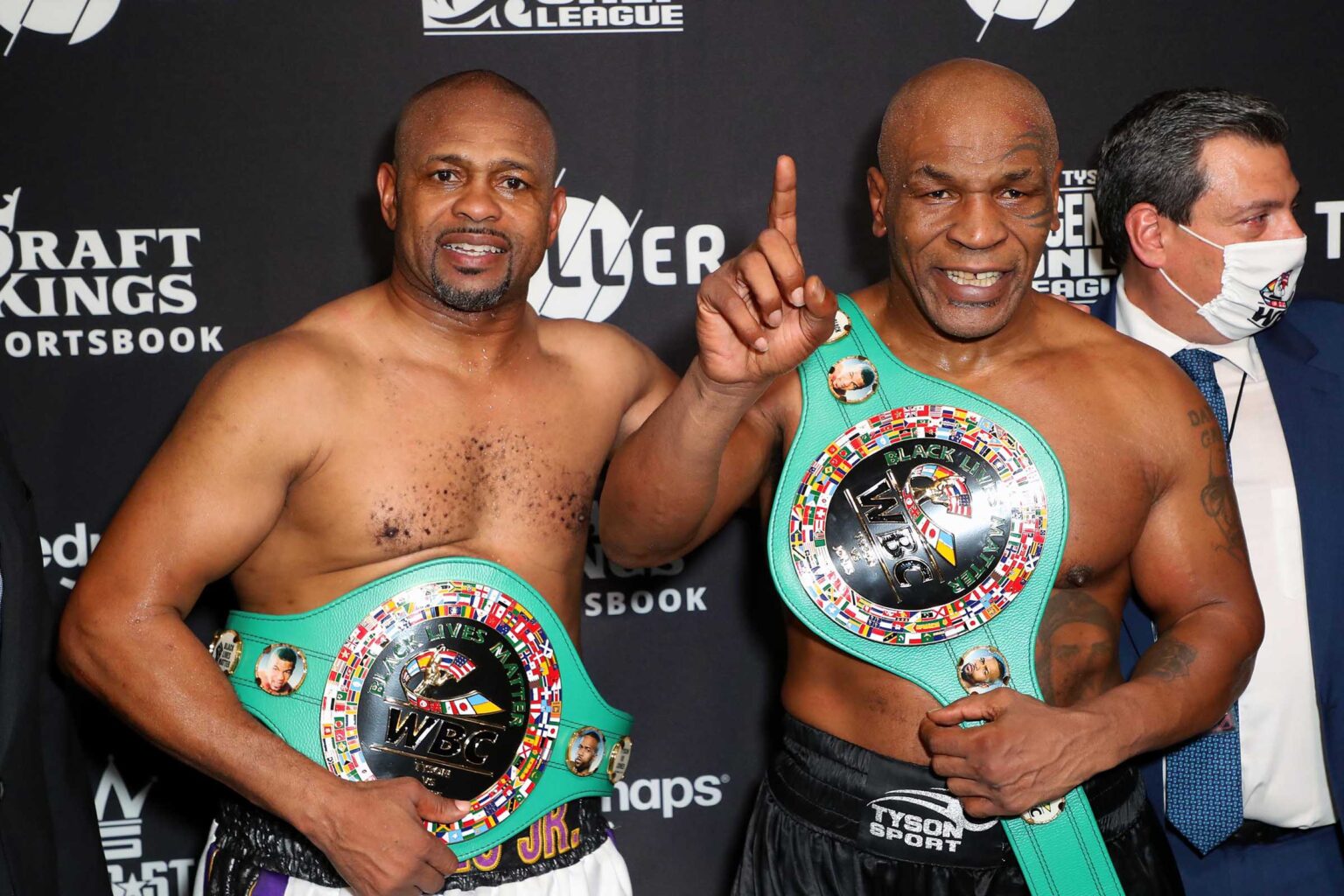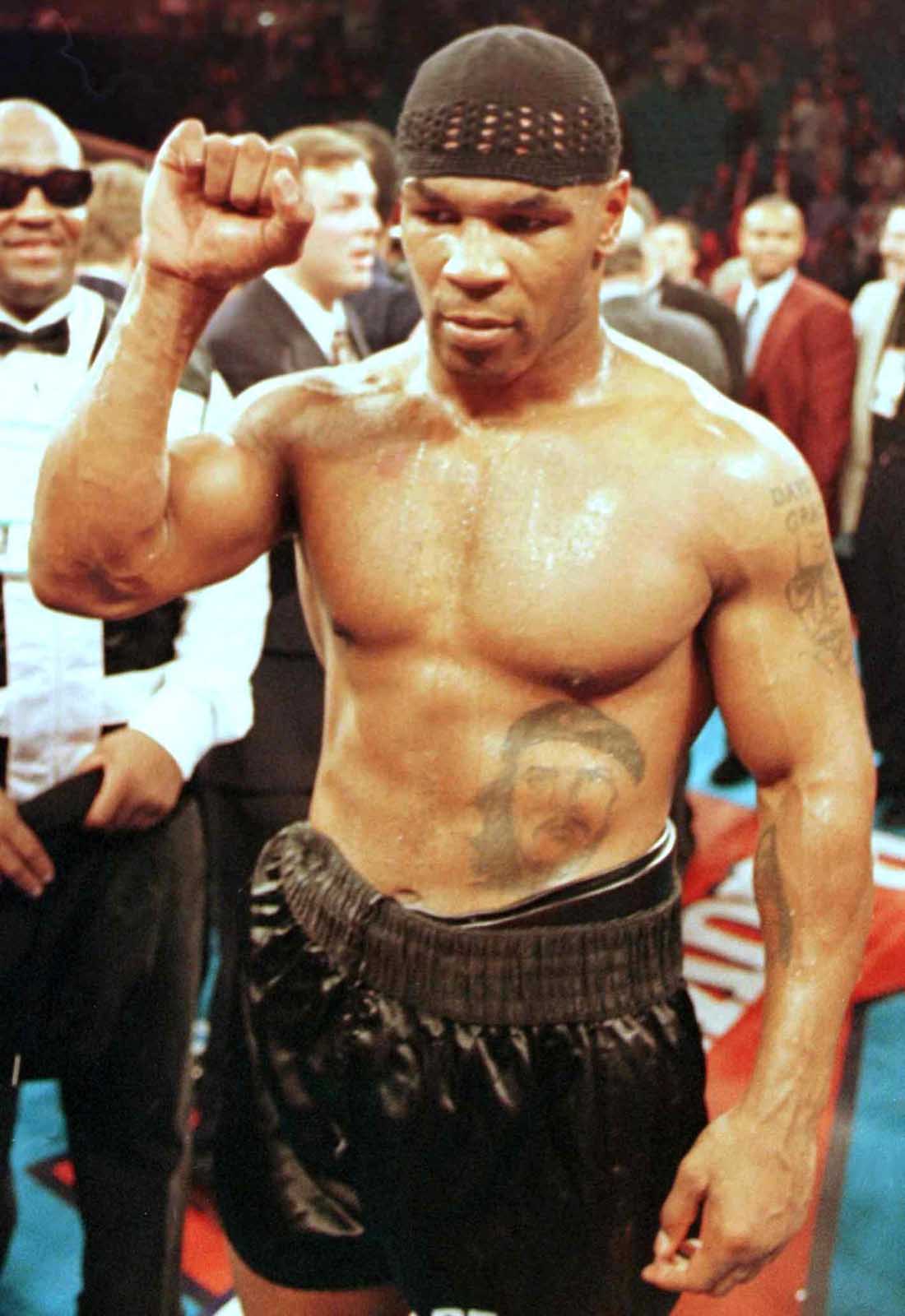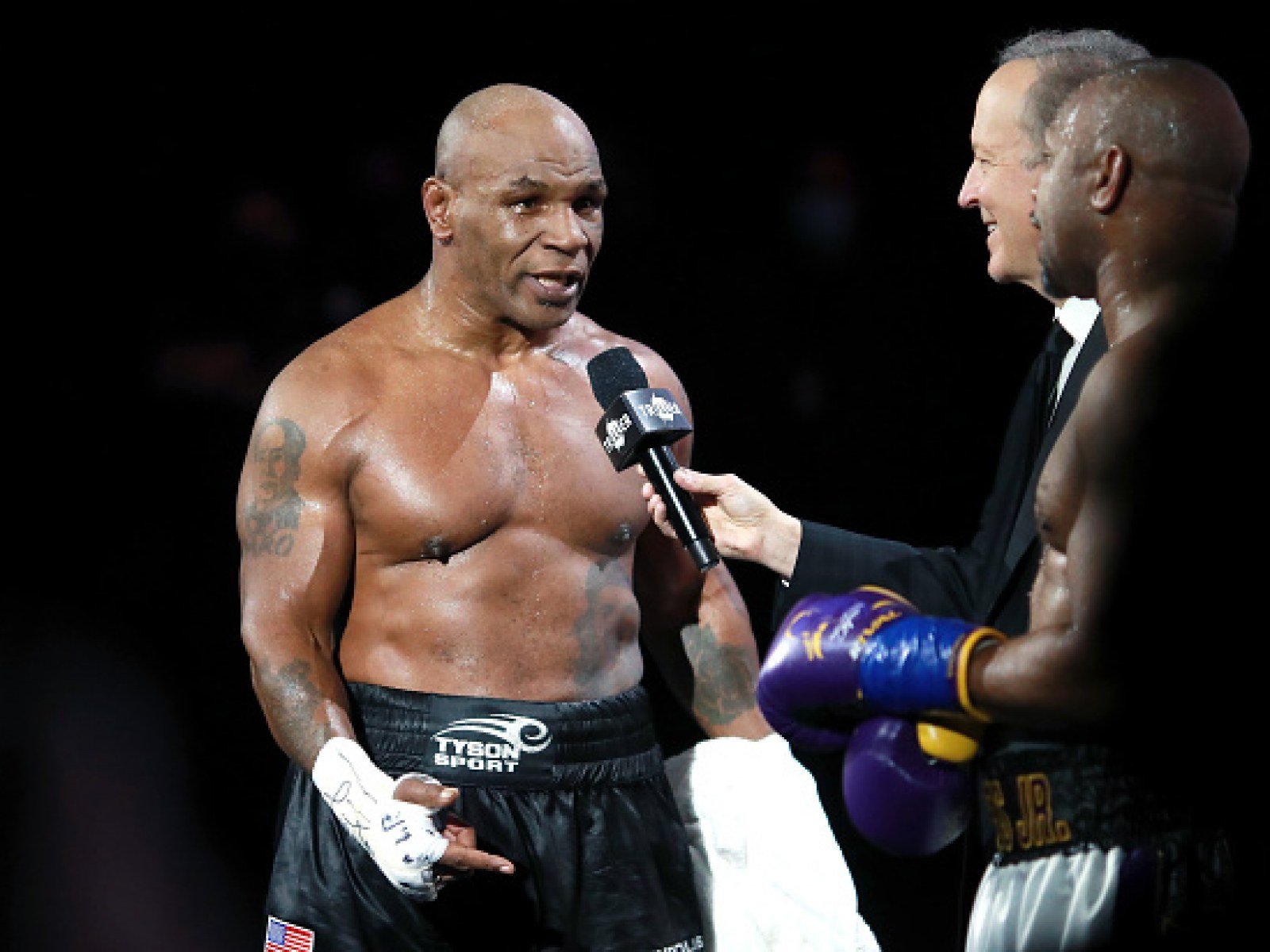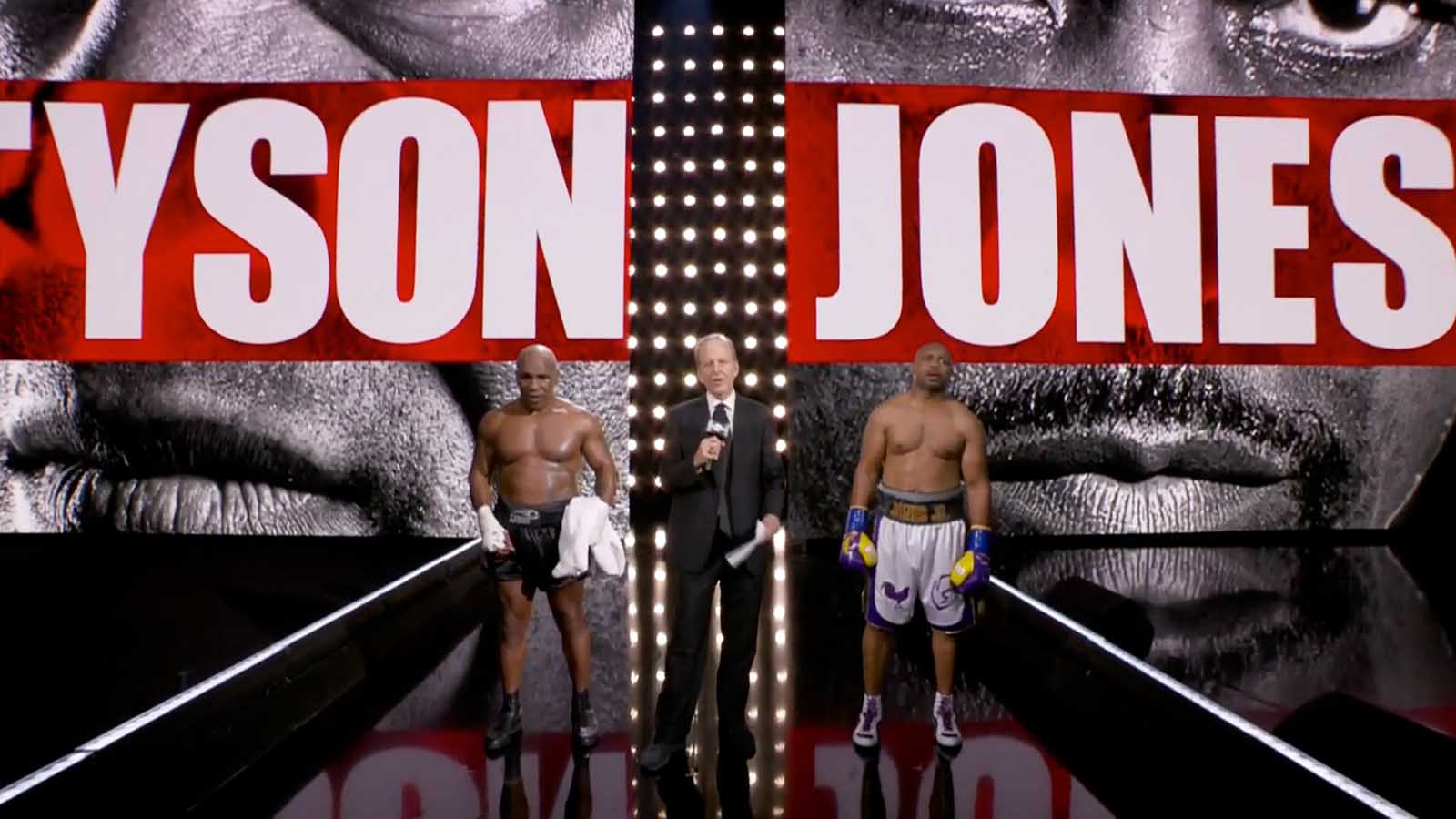
How did the Tyson vs. Jones Jr. fight benefit Mike Tyson’s net worth?
Tracking Mike Tyson’s net worth throughout the years is like riding a rollercoaster.
The world-famous boxer is renowned for impressive highs and some disastrous lows throughout his career. His finances follow a similar path, as Tyson’s luxurious lifestyle was usually encouraged by his professional success. “Big winner, even bigger spender” seemed to be his motto for decades.
To put things in perspective, Tyson’s net worth before his most recent fight with Jones Jr. was estimated at $3 million. However, Forbes listed his career earnings as high as $400 million. The gap between the two figures can feel staggering if you’re not familiar with the former world heavyweight champion’s history.

The Ups & Downs of Iron Mike
Mike Tyson shot to fame at a young age. He was only twenty years old when he won his first heavyweight title and he remained the undisputed world heavyweight champion from 1987 to 1990. He established himself as a force to be reckoned with, winning his first nineteen professional fights by knockout, twelve of them in the first round.
Due to his impressive victories, HBO offered him a $27 million eight-fight contract, which he promptly signed. This was followed up by a long-term $120 million contract with Showtime which covered several matches over the years, including his two bouts against another heavyweight superstar, Evander Holyfield, in 1996 & 1997.
Long before he battled Holyfield, however, Tyson would have to face the legal system. He was convicted on rape charges in 1992 and sentenced to six years in prison. It was a low point in his life, a decline that had started in 1990, when he was handed his first defeat by underdog Buster Douglas, and which had been marked by constant conflict with his own management and trainers.

Back in the ring
Tyson was released from prison in 1995, after serving less than half of his sentence. He jumped back into the ring without missing a beat and started making quick work of his opponents again. He was stopped in his tracks by the aforementioned Holyfield, who defeated him by TKO in their first match in 1996.
During their rematch in 1997, in one of the most bizarre moments in the history of boxing, Tyson bit a chunk of Holyfield’s ear off. This led to Tyson’s disqualification. Plus. $3 million were withheld from his $30 million purse by the Nevada state boxing commission. He was later fined an additional $3 million and had his boxing license temporarily rescinded.

License rescinded & bankruptcy
While Tyson was allowed to box again a year later, his unpredictable and often explosive behavior continued to get in the way of his career. He attempted to break Francois Botha’s arms during an early 1999 bout. In his fight against Lou Lavarese in 2000, he continued punching his opponent long after the referee had stopped the fight, knocking the referee to the floor as he tried to separate the fighters.
In 2002, the Nevada Boxing Commission refused to grant Tyson a license to box as he was facing possible sexual assault charges again. This caused his fight against Lennox Lewis for the Heavyweight Championship to have to be relocated to Memphis, Tennessee, after multiple states followed Nevada’s lead. Tyson ended up losing the match by knockout in the eighth round.
In 2003, his finances as turbulent as his professional life, Mike Tyson filed for bankruptcy. The bankruptcy filing indicated he was $23 million in debt at that point.

Money-squandering 101
When you’re a temperamental boxing superstar with a penchant for excess, the world doesn’t lack for ways to take your money. If you’re having trouble wrapping your mind around how Mike Tyson was in the red by 2003, let us walk you through some of his extravagant expenses.
Let’s start with an early mind-blower: a $2 million golden bathtub for his first wife. Not that he reserved expensive gifts for his family only. Legend goes that he would periodically surprise complete strangers by buying them $100,000 watches.

Hiring his own Joe Exotic & GI Joe
Of course, he also spent money on himself. If you watched The Hangover, you probably wondered if Tyson really owned a tiger in real life. He owned several, in fact, and they cost $70,000 each and required an animal trainer who charged $125,000 a year.
Surprisingly, that animal trainer’s salary wasn’t even half of what Tyson paid his “guerrilla warfare” guy. This was a man whose only job was to wear army fatigues and shout (you guessed it) “guerrilla warfare” at the boxer’s press conference. For his services, the guerrilla warfare guy was paid $300,000 a year.

Cars & mansions galore
The list goes on. Mike Tyson has owned over 100 cars in his lifetime, in addition to buying vehicles for his friends. He’s bought several mansions, one of which featured a nightclub and casino while another featured gold furnishings, several pools and a basketball court. His “walking around” money was $230,000 a month, just spent showing off his wealth. And this, of course, doesn’t include his constant legal expenses.
Needless to say, Tyson’s budgetary skills were not on par with his boxing talent.

Back in black (barely)
When his latest exhibition fight against Jones Jr. was announced, back in July 2020, Mike Tyson’s net worth had climbed back up to $3 million. The fact that it seems like a low number is a testament to how high Tyson’s stock had risen at one point. Still, the former champ claimed he wasn’t fighting for money. He went as far as assuring the press that he would donate his entire share of proceedings to charity.
That’s $10 million going to charity, if he keeps his word. Which wouldn’t benefit his net worth but would certainly benefit his reputation.



